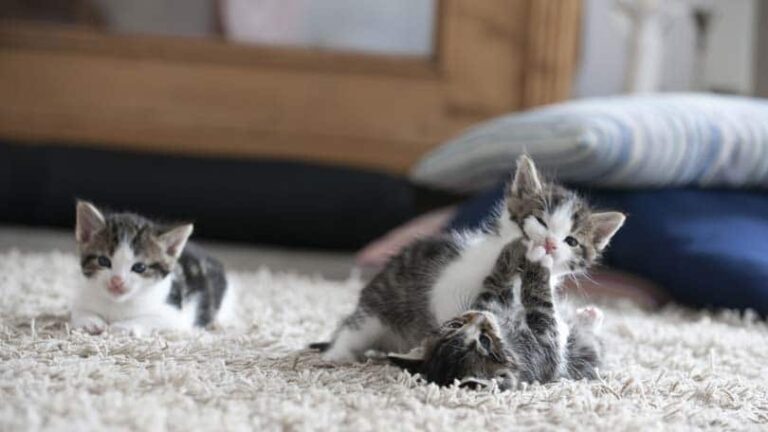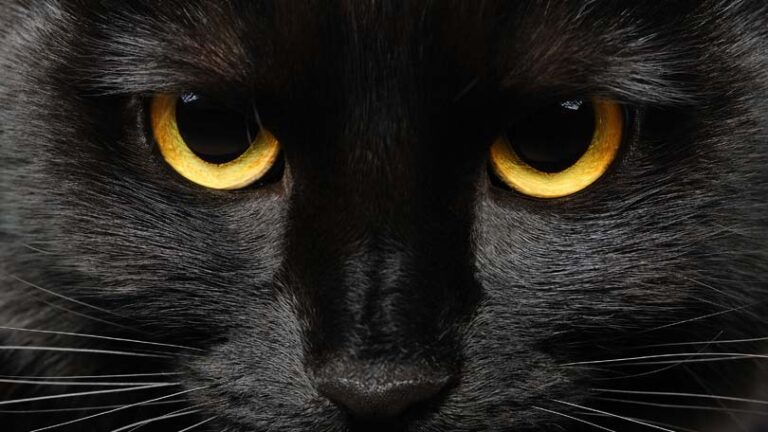Food Additives that are Harmful to Cats
Whilst cat food is designed to offer a complete and balanced diet for a cat, there are a number of chemicals and additives that are included in some commercial cat foods. Each additive serves a particular purpose and these can be for taste, appearance, or prolonging the shelf life of the product. Food additives that are harmful to cats can include emulsifiers that prevent oil and water from separating or artificial colors or flavors for improving the palatability of the product and the attractiveness of the product to consumers.
Additives do not provide nutritional value to cats, in the same way, that additives and chemicals included in food for humans do nothing to increase nutritional value. The levels of food additives appearing in food have steadily increased over the years although as more and more pet owners become wise to the clever marketing tricks and wording used by manufacturers and become more aware of food additives that are harmful to cats the call for natural or even organic food has increased.
Additives in the form of colorings are often present in cat food. These additives can be described in a number of different ways. “Artificial Colour” is one term that is often used, another is listing the colorings as E numbers. Sometimes the individual names of dyes are provided instead to avoid having to list E numbers which are well known by consumers as substances to be avoided in all food whether for pets or humans for health reasons. The additives used for colorings are often produced from coal or tar derivatives and often contain a variety of carcinogens that are very dangerous for anyone, particularly cats. They can interfere with the immune system making a cat very vulnerable to disease and illness. Sodium Nitrate is often used as both a preservative and a way to artificially produce a red color in cat food. This substance contains toxic nitrosamines that can have a very negative effect on a cat’s health.
All cat food must be preserved in some way or another to keep it fresh and edible. Because the process of canning itself is an effective way of preserving food, less additives are required. Dry food on the other hand needs a considerable amount of additives to elongate its shelf life. In order to achieve this antioxidants are necessary to stop the fats contained within the product from going rancid. The antioxidants that are used are often BHT or BHA, and some studies have linked this substance to cancer. The preservative propylene glycol has a drying effect on stools and can increase constipation in the short term in cats, but as there has not been in-depth research into the long-term effects of preservatives such as these, they could have much more serious and far-reaching effects that as yet are not fully known.
Ethoxyquin is a chemical antioxidant that was once freely used in human food. It was originally developed as a stabilizer for rubber and to act as a herbicide. With links to liver and kidney damage, cancers, hair loss, and fetal abnormalities, it is too dangerous for consumption. It is however present in some dry dog foods. No tests have been done on the effects of Ethoxyquin on cats, however, it would be prudent to avoid it altogether and ensure cats do not eat dog food. Despite the lack of research into the long-term effects of these particular types of additives on cats, it would be fair to say that at the very least they provide no nutritional benefits whatsoever, and at the very worst they cause illness and cancer.
Due to the backlash against artificial flavors, colors, and preservatives in all food, there has been a much louder call for natural or organic products for pets. Often the term “natural preservatives” will be used on cat food labels, but it is still wise to seek further information about these when they are present in a cat food product rather than assuming they are safer as often they are still generally speaking synthesized in a laboratory.
Although cats can’t taste sweetness, sweeteners such as glucose, sucrose, and corn syrup are often used to help make food moist and palatable. There has been a sharp rise in the amount of diabetes in cats, and there have been suggestions that this is caused by too much sugar in their diet. Sugar also stops the absorption of other nutrients into the blood which can lead to deficiencies and bad health. Salt is another additive that can be dangerous for cats. Although a small amount of sodium is needed by a cat in their diet, excessive amounts can cause kidney problems. Iodised salt in particular has been linked to hyperthyroidism in cats.
Because research is incomplete when it comes to additives in cat food, it is impossible to give a definitive list of the food additives that are harmful to cats and those that are safe. It is best to seek advice from your vet as to what cat food to purchase as they will be able to recommend products that are free from the harmful additives outlined above. Don’t forget that by law manufacturers of cat food are required to give contact details on their product, so you can contact them directly for further information about what is contained within the tin or bag.

Having discovered a fondness for insects while pursuing her degree in Biology, Randi Jones was quite bugged to know that people usually dismissed these little creatures as “creepy-crawlies”.







